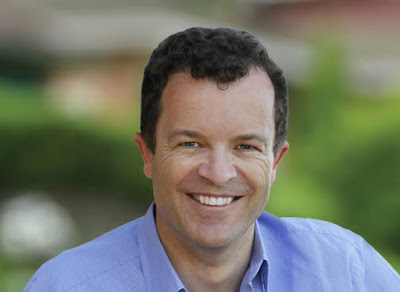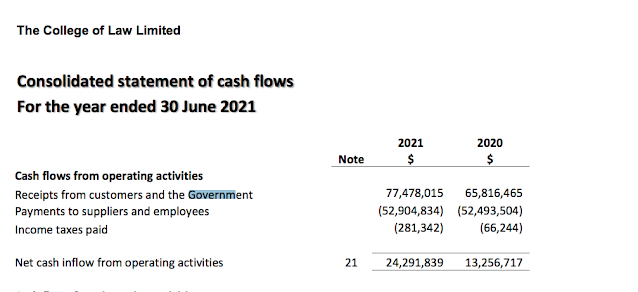Melbourne jihadi proves again the need for an effective counter-penetration and counter-sanctuaries strategy: De-radicalization,community policing & other vote preserving strategies have failed.
by Ganesh Sahathevan
As reported by the ABC, a strong proponent of "de-radicalization" and other forms of superstition:
Hassan Khalif Shire Ali was born in 1988. He and his family moved from Somalia to Australia in the 1990s.
Police say his family is well known and respected within the Somali community in Melbourne.
They attended the Virgin Mary Mosque in Hoppers Crossing, west of Melbourne.
Shire Ali most commonly attended prayer in Melbourne's northern suburbs.
He was married. His wife is speaking to police.
Shire Ali had lived with family in Werribee but the ABC has been told he recently moved from the home because of problems with substance abuse.
Shire Ali was known to intelligence agencies and police.
His passport was cancelled in 2015 when the Australian Security Intelligence Organisation (ASIO) believed he planned to travel to Syria.
Police say he held radical views and had links to the Islamic State (IS) group.
However, Shire Ali was never targeted by a Joint Counter Terrorism Teams (JCTT) investigation because an assessment was made that he did not pose a threat to national security.
He was not actively monitored.
JCTT will now investigate how and when he moved from having those radical views to carrying out the attack.
Shire Ali lived within a network which would have known of his inclinations. Given the status of his family, the network would have been extensive ,and capable of providing the resources for jihadi activities.
Excerpt
As reported by the ABC, a strong proponent of "de-radicalization" and other forms of superstition:
Hassan Khalif Shire Ali was born in 1988. He and his family moved from Somalia to Australia in the 1990s.
Police say his family is well known and respected within the Somali community in Melbourne.
They attended the Virgin Mary Mosque in Hoppers Crossing, west of Melbourne.
Shire Ali most commonly attended prayer in Melbourne's northern suburbs.
He was married. His wife is speaking to police.
Shire Ali had lived with family in Werribee but the ABC has been told he recently moved from the home because of problems with substance abuse.
Shire Ali was known to intelligence agencies and police.
His passport was cancelled in 2015 when the Australian Security Intelligence Organisation (ASIO) believed he planned to travel to Syria.
Police say he held radical views and had links to the Islamic State (IS) group.
However, Shire Ali was never targeted by a Joint Counter Terrorism Teams (JCTT) investigation because an assessment was made that he did not pose a threat to national security.
He was not actively monitored.
JCTT will now investigate how and when he moved from having those radical views to carrying out the attack.
Shire Ali lived within a network which would have known of his inclinations. Given the status of his family, the network would have been extensive ,and capable of providing the resources for jihadi activities.
What is needed is a solution that will disrupt passive support networks. West Germany's dismantling of the Red Army Faction provides a a good example of how, the article below by the late B.Raman, former head of counter-terrorism at India's R&AW explains why counter-penetration and counter-sanctuaries strategies are vital. De-radicalization,community policing & other vote preserving strategies have failed.
END
Unless effective counter-penetration and counter-sanctuaries strategies are devised and enforced vigorously, we will all continue to bleed at the hands of the jihadi terrorists.
While the PLO, the Abu Nidal Group and the Hizbollah were the beneficiaries of support from the Muslim States, the other organisations received the backing of the communist states in East Europe, North Korea and Cuba. In both cases, the support consisted of not only money, training, arms and ammunition and false documentation, but also, more importantly, sanctuaries.
It was the realisation that no counter-terrorism fight against a foreign-sponsored terrorist organisation can be effective unless action is taken against the guilty State, which motivated the US Congress in the late 1970s to make it mandatory for the US Administration to act against foreign state-sponsors of terrorism.
It was the realisation that no counter-terrorism fight against a foreign-sponsored terrorist organisation can be effective unless action is taken against the guilty State, which motivated the US Congress in the late 1970s to make it mandatory for the US Administration to act against foreign state-sponsors of terrorism.
| ||||
OPINION There can be no effective counter-terrorism without effective counter-penetration and counter-sanctuaries techniques and capabilities. There can be no effective counter-terrorism without effective counter-penetration and counter-sanctuaries techniques and capabilities. Penetration refers to one’s capability to penetrate the set-up of a terrorist organization to collect human and technical intelligence about its future plans. The impressive success rate of the unmanned Drone flights of the US in the Federally-Administered Tribal Areas (FATA) of Pakistan since August, 2008, spoke of a significant improvement in the penetration operations of the US intelligence community in their continuing fight against Al Qaeda and the Afghan and Pakistani Taliban. Similarly, the impressive number of instances of detection and neutralization of indigenous and Pakistan-sponsored terrorist cells by the Indian intelligence community and police during 2009 was the outcome of an improvement in their penetration operations -- after the series of explosions in the urban areas organised by the so-called Indian Mujahideen since November, 2007, and after the 26/11 terrorist strikes by the Lashkar-e-Toiba (LeT) of Pakistan in Mumbai. Effective penetration is important for successful counter-terrorism, but the gains made by effective penetration can be diluted if it is not accompanied by effective counter-penetration. Counter-penetration refers to one’s ability to thwart the attempts of the terrorists to penetrate one’s set-up -- sometimes to collect the intelligence required for planning their operations and sometimes for the planning and execution of their terrorist strikes. A weak counter-penetration capability facilitates a terrorist strike. Weaknesses in the counter-penetration capability of the Indian counter-terrorism community were brought out by the ease with which David Coleman Headley and Tahawwur Hussain Rana of the Chicago cell of the LeT managed to obtain visas from the Indian Consulate-General in Chicago without a proper scrutiny of their visa applications and the equal ease with which they repeatedly managed to pass through the Indian immigration manned by intelligence officers without a proper scrutiny of their passports and their landing and departure cards. The success of Headley in visiting different places in India in order to collect operational information, staying in hotels and making a network of contacts without being suspected even once by the police Special Branches in different states showed the disturbing state of our counter-penetration capability. One of the principal tasks of the police Special Branches and the regional offices of the Intelligence Bureau (IB) and the Research & Analysis Wing (R&AW) all over the country is to detect and neutralize attempts of indigenous and foreign terrorist organizations to penetrate our set-up. The fact that neither the passport-visa section of the Ministry of External Affairs nor the airport set-ups of the IB and the R&AW nor the Special Branches of different States and the regional offices of the IB and R&AW suspected Headley and Rana even once till they were ultimately arrested by the USA’s Federal Bureau of Investigation (FBI) in October, 2009, speaks poorly of them. Weaknesses in the counter-penetration capabilities of the US in the US homeland were brought out by an incident in a US military base in Fort Hood, Texas, on November 6, 2009. Major Nidal Malik Hasan, a psychiatrist of the US Army born to Palestinian migrants to the US from Jordan, suddenly went on a killing spree killing 13 soldiers with a handgun before he was injured and overpowered. Initially, it was presumed to be an isolated attack of an angry Muslim individual in the US Army, but subsequent enquiries have brought out worrisome details of his alleged contacts with Anwar Al Awlaki, an extremist cleric born in the US, who has been living in Yemen since 2002. Many regard Awlaki as an ideologue of Al Qaeda in Yemen. There were adverse indicators about Major Hasan in the past, but these were either not noticed or, if noticed, not taken seriously. Even now, there is a reluctance in the Obama Administration to admit that the case of Major Hasan indicates a possible success of Al Qaeda in penetrating the US Army and was made possible by a weak counter-penetration capability in the US homeland. This is similar to the reluctance of the Government of India to admit weaknesses in our counter-penetration set-up, which were exploited by Headley and Rana. Weaknesses in the counter-penetration capabilities of the US in the Af-Pak region have now been revealed by the ease with which the Afghan Taliban penetrated the Afghan National Army (ANA) by having one of its members recruited into it and used him to kill seven officers of the Central Intelligence Agency (CIA) deployed near the Pakistan border in the Khost province of Afghanistan through an act of suicide terrorism. Details available till now indicate that the CIA set-up in the Khost area was playing an important role in facilitating the Drone strikes in the FATA. If this is correct, the Afghan Taliban not only managed to identify the CIA set-up in Afghan territory, which was behind the increasing successes of the Drone strikes against Al Qaeda and the Taliban, but also managed to penetrate it without its penetration efforts being thwarted by the counter-penetration capabilities of the US intelligence community. Counter-penetration is a difficult task in an operational area such as Jammu & Kashmir in India’s fight against Pakistan-sponsored terrorism or in the Af-Pak region in the USA’s fight against Al Qaeda and the Taliban. Failures are bound to be there despite the best efforts at counter-penetration. One should keep admitting and analysing those failures in order to identify and close gaps in counter-penetration security. Counter-penetration failures in non-operational areas such as in the Indian hinterland in the case of Headley and Rana and in the US homeland in the case of Major Hasan should be a matter of serious concern. In the case of India, the failures lasted nearly three years before they were noticed after the arrest of Headley and Rana by the FBI in October, 2009. If such failures have to be reduced, if not prevented, in future, one must have the political courage to admit them and go into them thoroughly. One does not find evidence of such courage either in Washington DC or in New Delhi. The reflexes in the two capitals are similar -- play down the gravity of the failures and avoid a thorough probe. The post-1967 escalation in terrorism by organisations such as the Palestine Liberation Organisation (PLO), the Abu Nidal Group, the Hizbollah, the set-up of Carlos, the Baader-Meinhof of the then West Germany, the Red Army factions of West Germany and Japan, the Irish Republican Army etc was made possible partly by the support received by them from the Muslim States such as Syria, Libya, Sudan, Iraq and Iran and partly by the support from the USSR and other communist states. While the PLO, the Abu Nidal Group and the Hizbollah were the beneficiaries of support from the Muslim States, the other organisations received the backing of the communist states in East Europe, North Korea and Cuba. In both cases, the support consisted of not only money, training, arms and ammunition and false documentation, but also, more importantly, sanctuaries. It was the realisation that no counter-terrorism fight against a foreign-sponsored terrorist organisation can be effective unless action is taken against the guilty State, which motivated the US Congress in the late 1970s to make it mandatory for the US Administration to act against foreign state-sponsors of terrorism. The post-1991 collapse of the Communist States in East Europe practically brought an end to the activities of the ideologically-oriented leftist terrorist groups. Without sanctuaries and other assistance from countries such as the then East Germany and Yugoslavia, they could not survive. It was again the pressure exercised by the US against States such as Syria and the Sudan, which made organisations such as Al Qaeda shift their sanctuaries to the Af-Pak region. It is the present reluctance of successive US administrations to act as vigorously against Muslim States sponsoring or aiding jihadi terrorism in foreign territories as they used to act against communist states in the past which should account for the continuing successes of organisations such as Al Qaeda and the LeT. India paid a heavy price on 26/11 for the continuing inaction against Pakistan’s state-sponsorship of jihadi terrorism. The US almost paid a similar price at Detroit on 25/12 when a Nigerian terrorist, trained in a sanctuary in Yemen, narrowly failed in his attempt to blow up an American plane over Detroit. Whereas Pakistan has been using terrorism as a strategic weapon to advance its foreign policy objectives, there is no reason to believe that Yemen is doing the same. But Yemen’s inability to acteffectively against the sanctuaries in its territory is posing the same threat to the security of the US homeland as Pakistan’s active complicity with the terrorists is posing to the security of the Indian and US homelands. Unless effective counter-penetration and counter-sanctuaries strategies are devised and enforced vigorously, we will all continue to bleed at the hands of the jihadi terrorists. B. Raman ( is Additional Secretary (retd), Cabinet Secretariat, Govt. of India, New Delhi, and, presently, Director, Institute For Topical Studies, Chennai. | ||||



Comments
Post a Comment